Abstract
De Wit replacement series were used to study competitive interactions between epiphytic Ice+Pseudomonas syringae strains and the biological frost control agents Ice-P. syringae TLP2del1 and Pseudomonas fluorescens A506. Mixtures containing two strains in different proportions but at a constant total population size were inoculated onto potato leaves. The population sizes of each strain and the total population size were determined when the community had reached equilibrium. A near-isogenic P. syringae strain pair exhibited an interaction similar to that expected for strains competing equally for limiting environmental resources. Replacement series with nonisogenic Ice+ and Ice-P. syringae strain pairs suggested that these strains competed for limiting resources according to their relative competitive abilities. There was no evidence of any niche differentiation between the Ice+P. syringae strains and the Ice-P. syringae strain. The growth responses of epiphytes following addition of nutrients to the phyllosphere indicated that the epiphytic P. syringae populations were nutrient limited and that, under growth chamber conditions, the populations were more limited by the availability of carbon than by the availability of nitrogen. Determination of in vitro carbon source utilization profiles provided further evidence for the lack of niche differentiation between the Ice+ and the Ice-P. syringae strains. Niche overlap indices calculated for the Ice+P. syringae strains with respect to Ice-P. syringae TLP2del1 were uniformly high, indicating ecological similarity, and were consistent with the observed low level of coexistence. The biological frost control agent P. fluorescens A506 replaced P. syringae. This was correlated with a high degree of niche overlap between these species.
Full text
PDF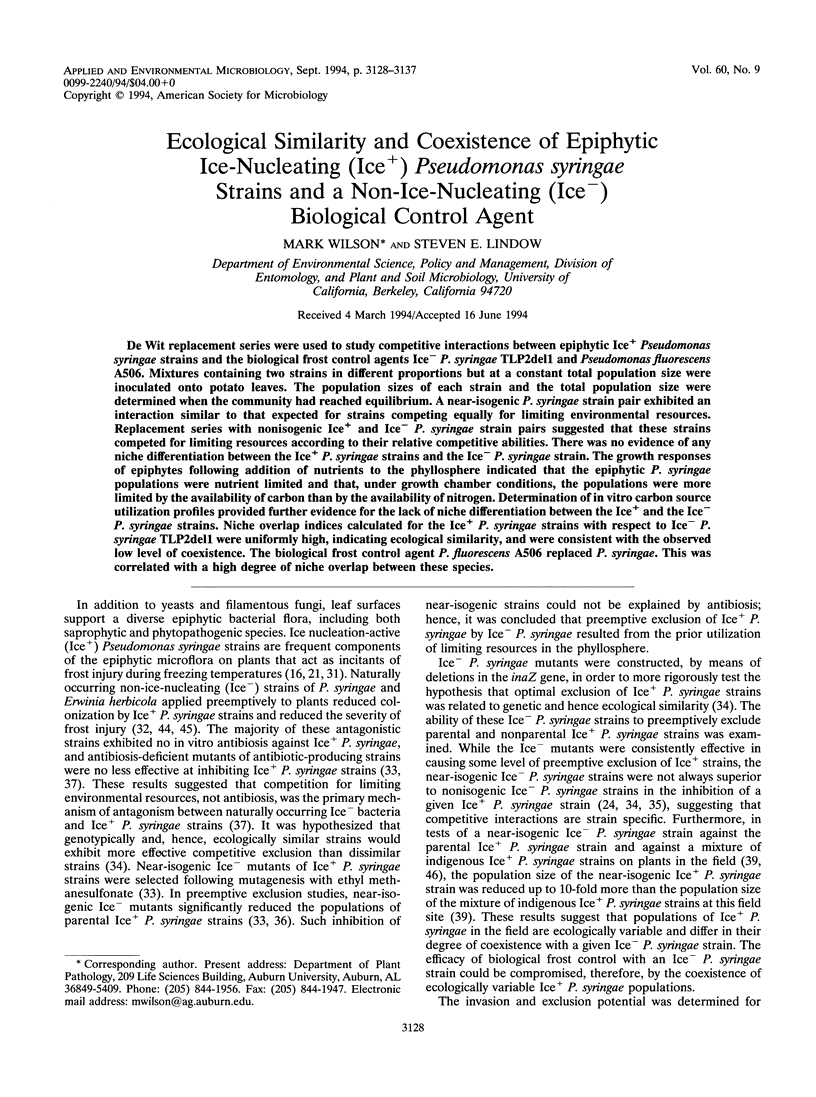
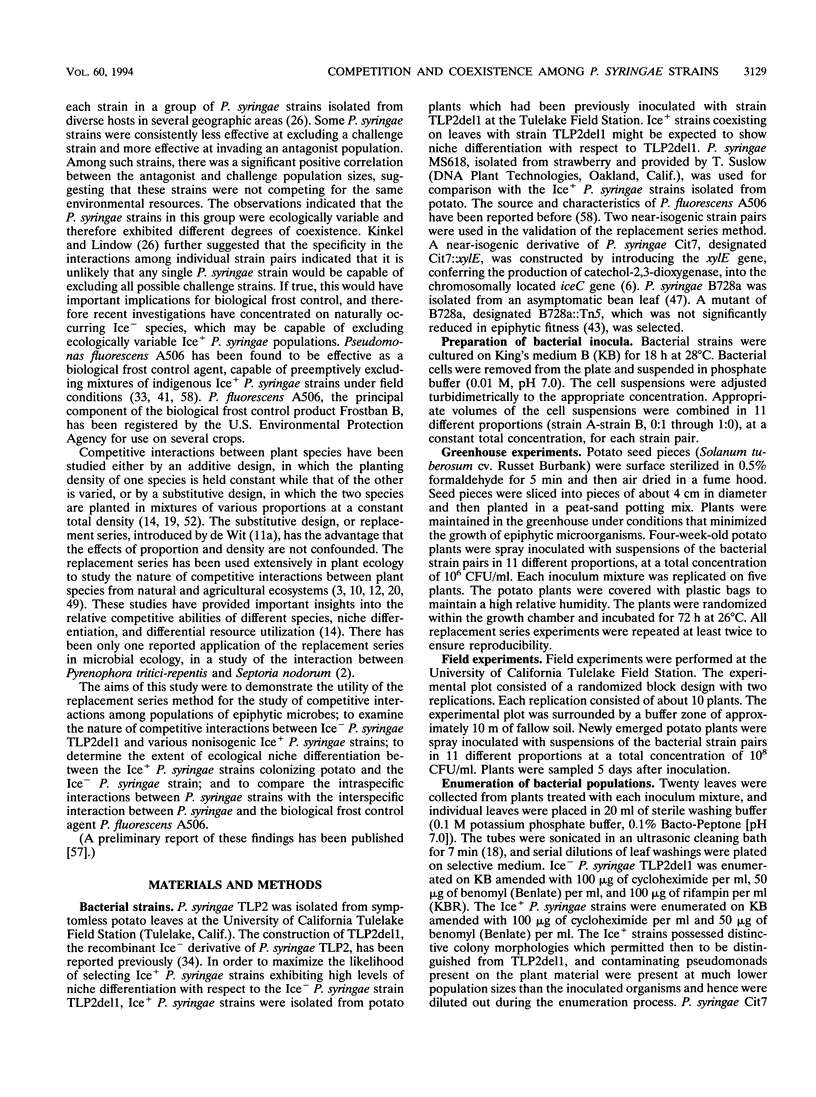
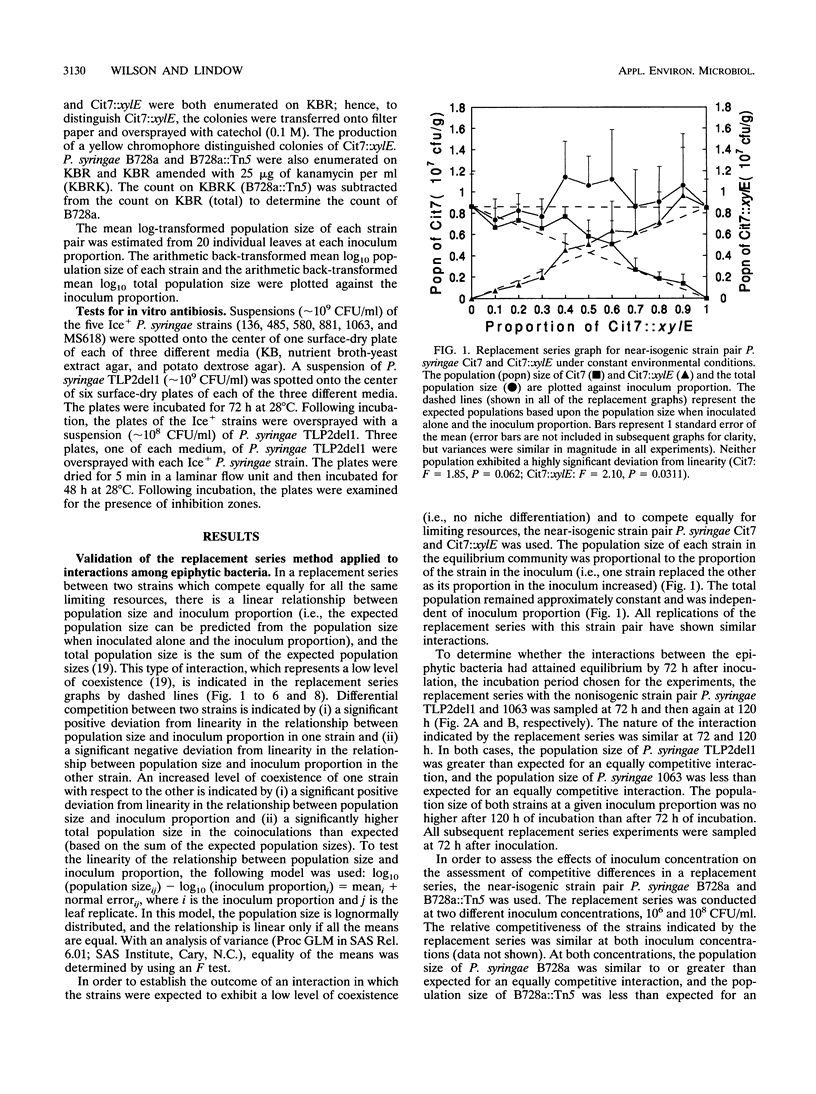
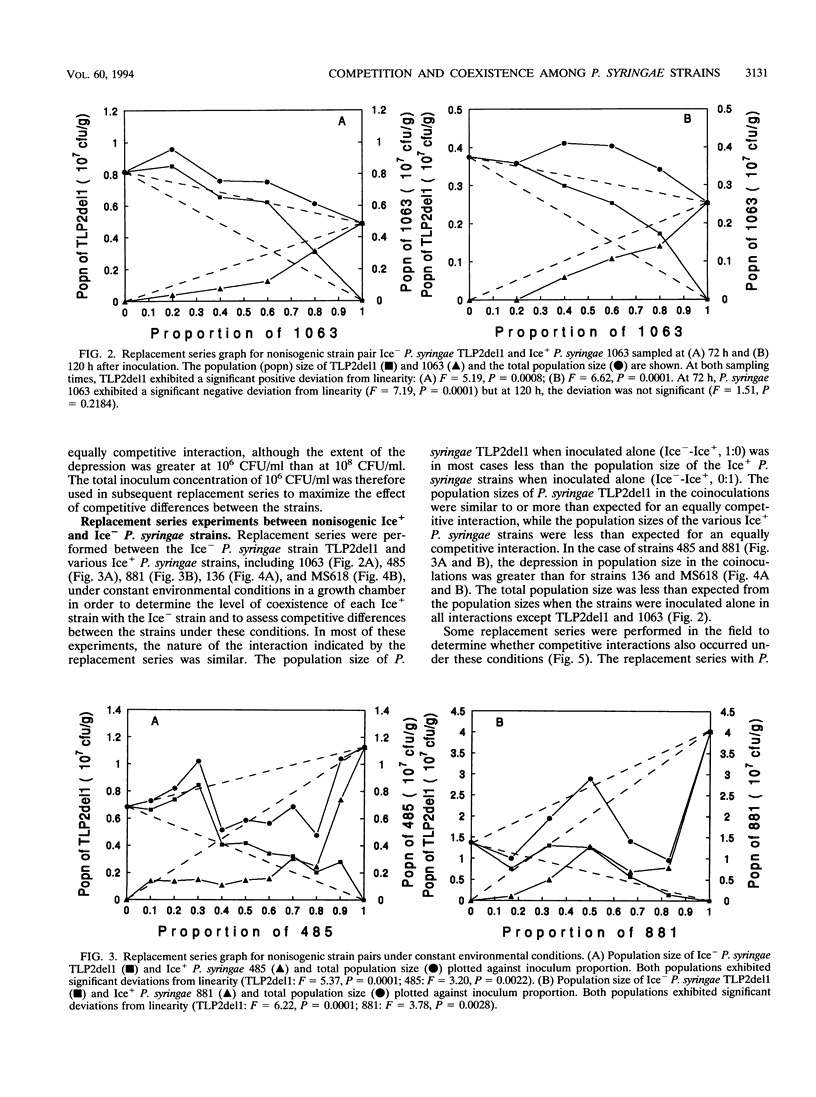
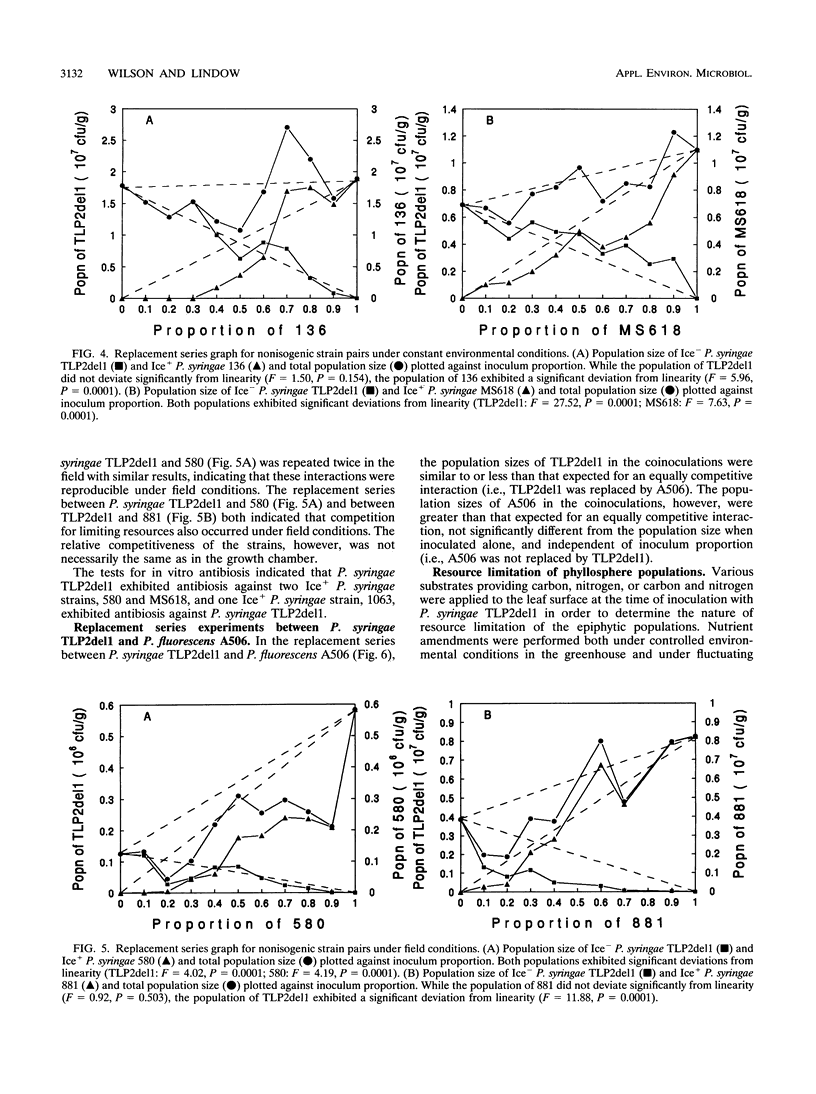
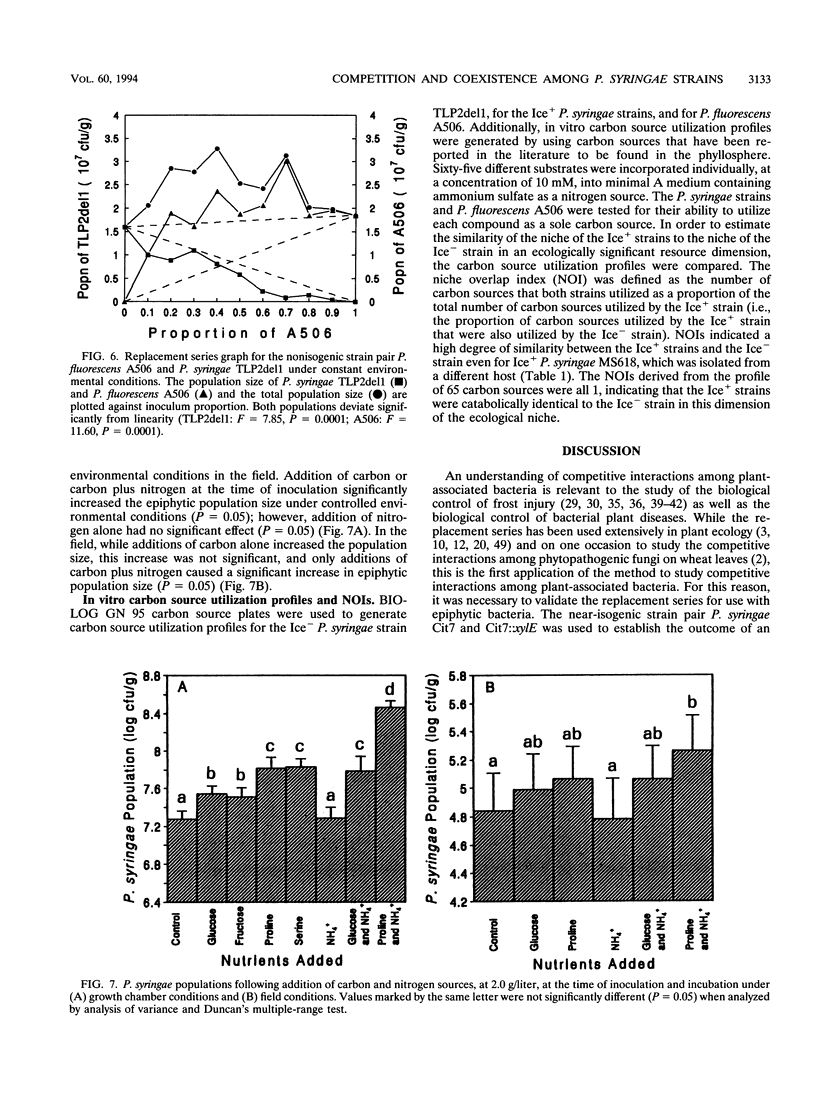
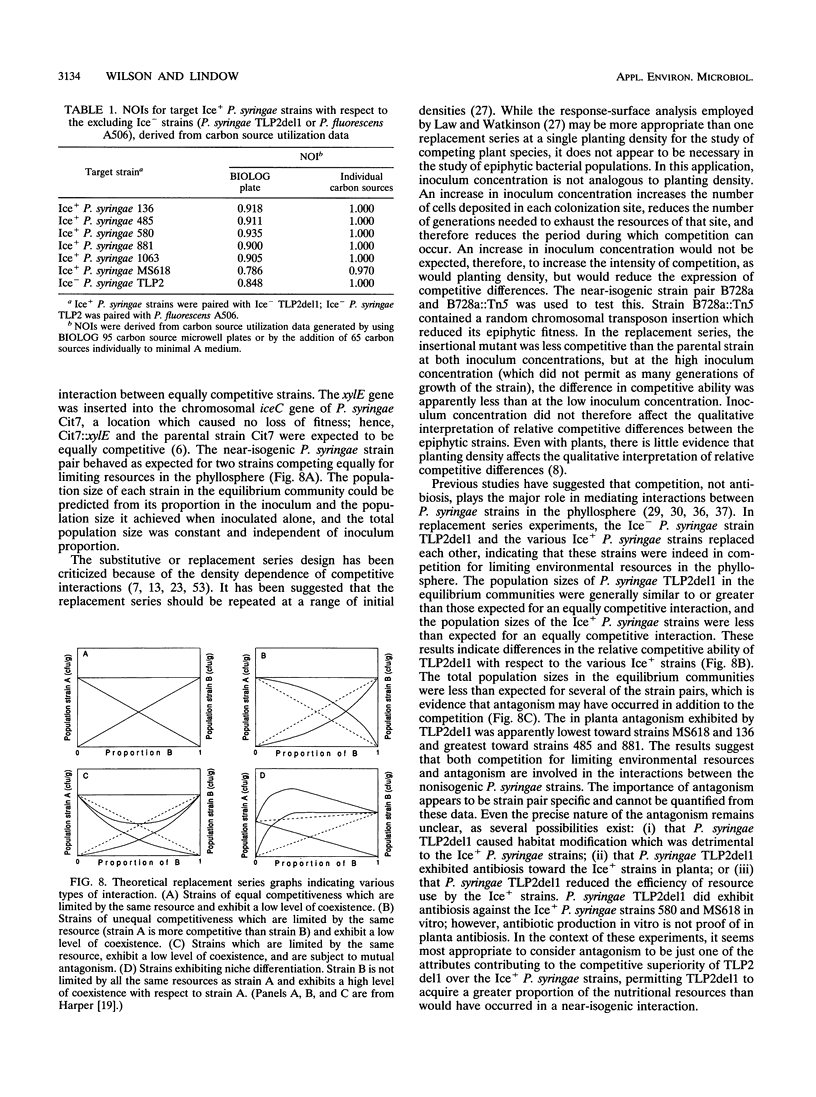
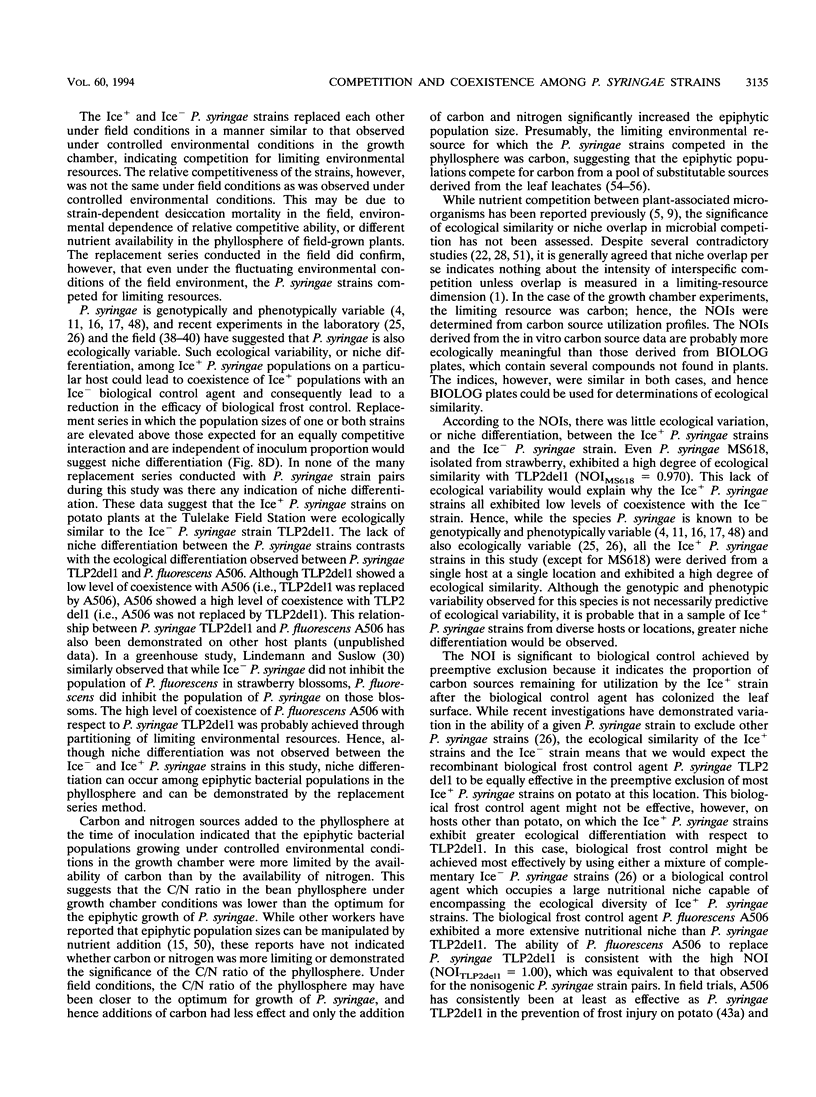
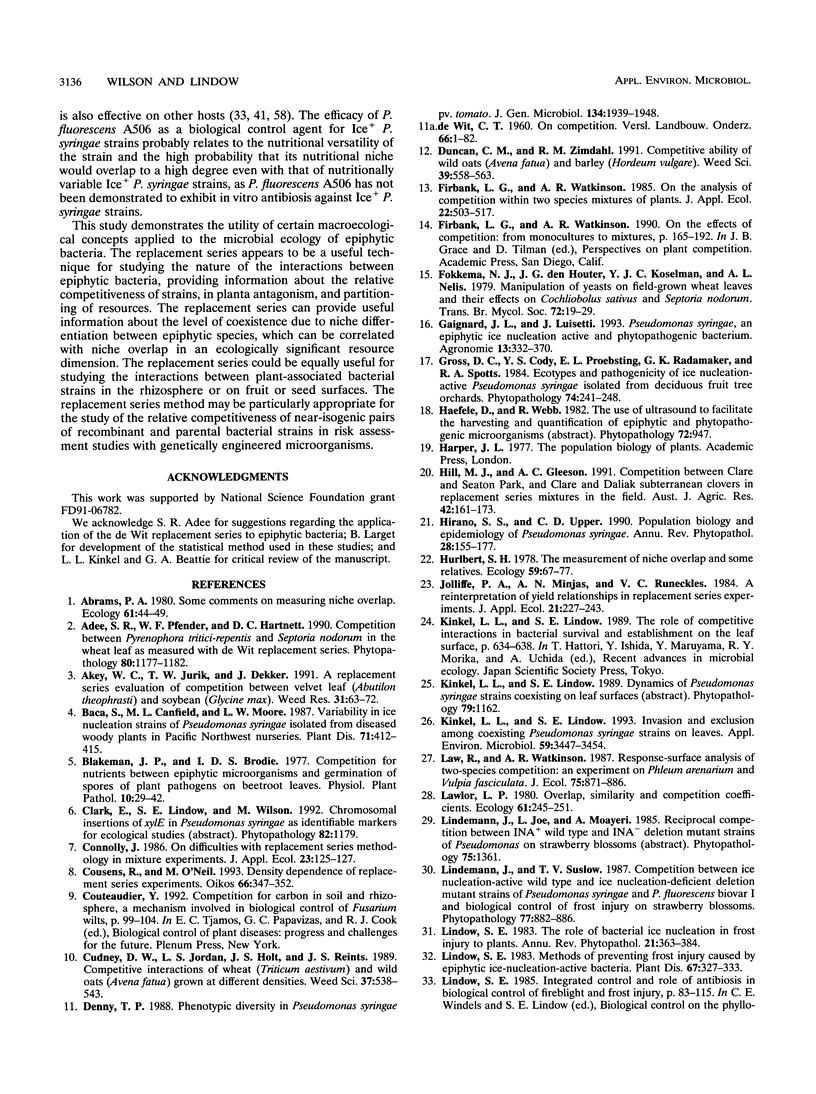
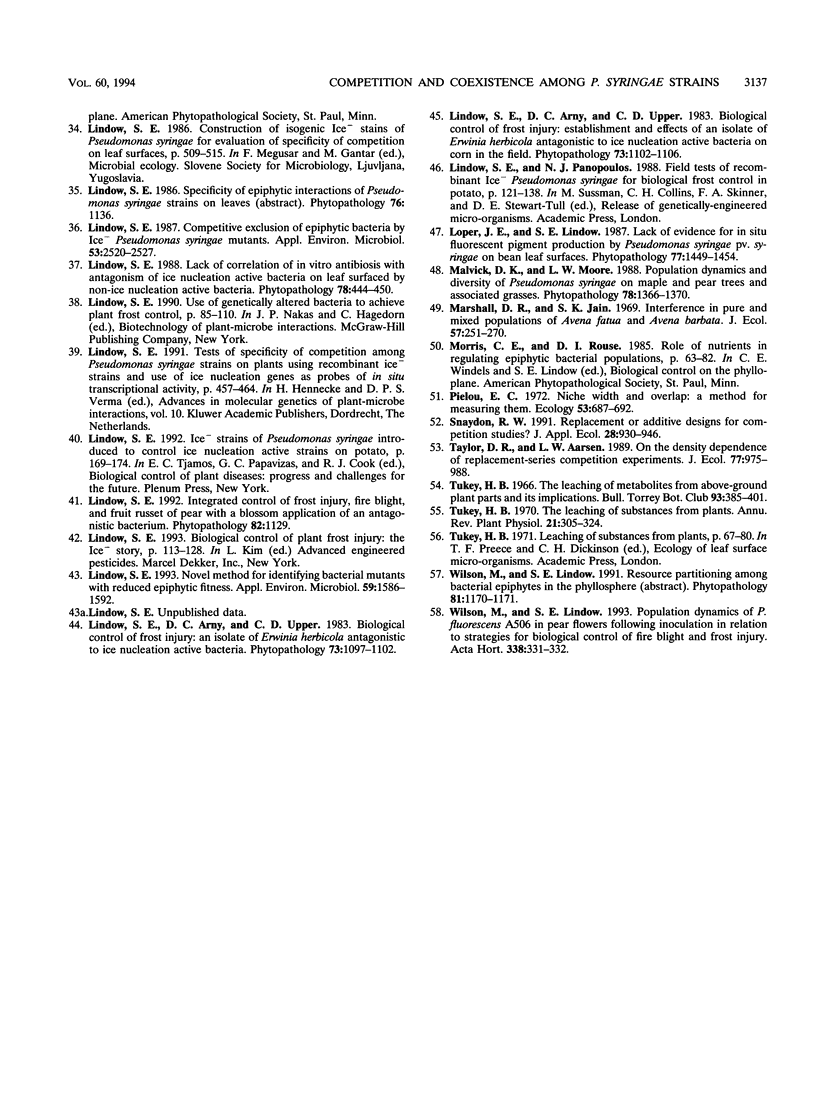
Selected References
These references are in PubMed. This may not be the complete list of references from this article.
- Kinkel L. L., Lindow S. E. Invasion and Exclusion among Coexisting Pseudomonas syringae Strains on Leaves. Appl Environ Microbiol. 1993 Oct;59(10):3447–3454. doi: 10.1128/aem.59.10.3447-3454.1993. [DOI] [PMC free article] [PubMed] [Google Scholar]
- Lindow S. E. Competitive Exclusion of Epiphytic Bacteria by IcePseudomonas syringae Mutants. Appl Environ Microbiol. 1987 Oct;53(10):2520–2527. doi: 10.1128/aem.53.10.2520-2527.1987. [DOI] [PMC free article] [PubMed] [Google Scholar]
- Lindow S. E. Novel method for identifying bacterial mutants with reduced epiphytic fitness. Appl Environ Microbiol. 1993 May;59(5):1586–1592. doi: 10.1128/aem.59.5.1586-1592.1993. [DOI] [PMC free article] [PubMed] [Google Scholar]


